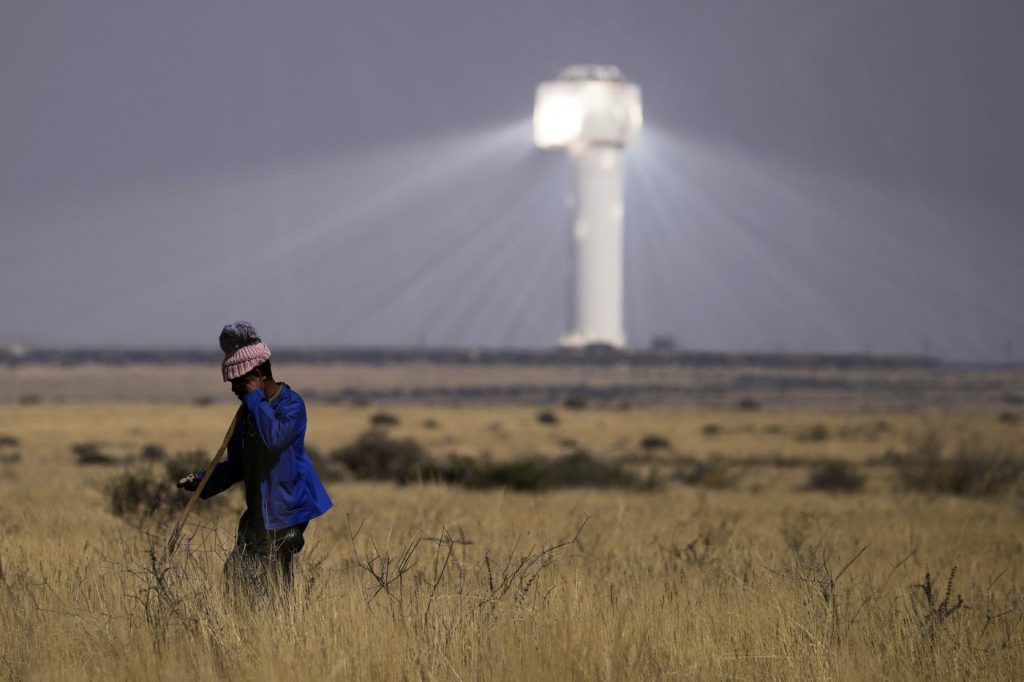UPINGTON, South Africa (AP) – In South Africa's Northern Cape province, just south of the Kalahari Desert, the KHI Solar One project stands as a beacon of renewable energy innovation. A towering structure above a field of solar mirror panels captures sunlight throughout the day. These mirrors tilt at various angles to focus sun rays onto a receiver mounted on the tower, which absorbs the intense heat, boils water, and generates high-pressure steam. This process produces 50 megawatts of electricity, capable of providing power to over 40,000 households for a day.
The KHI Solar One initiative is part of a broader effort to diversify South Africa’s energy grid, which remains heavily dependent on coal-fired power stations. As thousands of delegates prepare to convene in Addis Ababa, Ethiopia, for the Africa Climate Summit, the urgency for additional renewable energy projects has been underscored. These initiatives are essential not only for delivering electricity to millions of people across the continent but also for mitigating the effects of climate change.
Africa faces significant energy challenges, with around 600 million people living without electricity out of a population of approximately 1.5 billion. This lack of access means many children cannot study at night, and households are unable to power essential appliances. The World Bank reports that regions like Central and West Africa suffer from some of the lowest electrification rates globally. In West Africa, an alarming 220 million individuals are left without power, leading to electrification rates as low as 8%.
The absence of electricity adversely affects access to quality healthcare, education, and the economic growth necessary for sustainable development. While other regions, such as China and Europe, have made significant strides in adopting renewable energy sources, Africa has lagged behind. Currently, only 1.5% of the world’s installed renewable power capacity is situated in Africa.
Despite having approximately 60% of the world's best solar resources, Africa's renewable energy potential remains largely untapped. According to a report from the United Nations, the continent's vast deserts and warm climate create significant possibilities for solar energy projects. However, Africa received a mere 2% of global clean energy investments in 2024.
During a climate summit in January of this year, African leaders pledged to expand renewable energy capacity in Africa to 300 gigawatts by 2030. This ambitious goal would equate to the output of around 114 large power stations, enough to supply a large city or even a small country. The International Renewable Energy Agency projects that by 2050, renewable energy—primarily solar—could generate up to 90% of Africa’s power needs, with various countries including South Africa exploring a mix of energy sources that encompasses hydropower and wind energy.
In a notable development, recent analyses have shown a significant increase in Chinese solar panel exports to Africa. Reports from energy think tank Ember reveal that solar panel imports from China surged by 60% in the past year to 15,032 megawatts. In total, 20 African nations have registered record levels of solar panel imports within a 12-month timeframe. Originally driven by the urgent need in South Africa—where extended power blackouts have plagued the nation—the rising demand has led to a tripling of solar panel imports from countries outside South Africa over the past year.
Independent energy companies are increasingly recognizing Africa as a lucrative market for solar products, motivated by the continent’s pressing energy needs. As initiatives like KHI Solar One pave the way for renewable energy advancements, they highlight the critical role solar energy could play in transforming Africa’s energy landscape.










